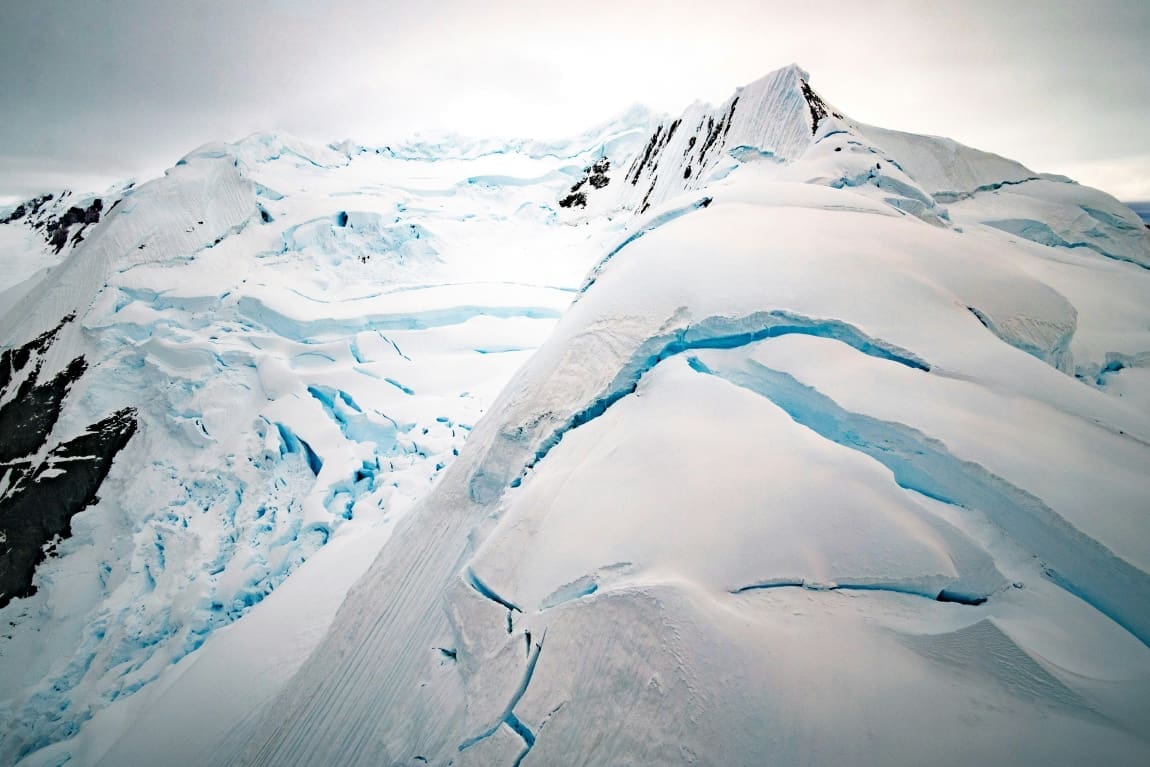Effects will depend on how much global warming is controlled, study finds.
By Tatyana Woodall | Ohio State University
The rising earth beneath the Antarctic Ice Sheet will likely become a major factor in future sea level rise, a new study suggests.
Despite feeling like a stationary mass, most solid ground is undergoing a process of deformation, sinking and rising in response to many environmental factors. In Antarctica, melting glacial ice means less weight on the bedrock below, allowing it to rise. How the rising earth interacts with the overlying ice sheet to affect sea level rise is not well-studied, said Terry Wilson, co-author of the study and a senior research scientist at the Byrd Polar and Climate Research Center at The Ohio State University.
In the new study, Wilson’s colleagues at McGill University developed a model to predict how these interactions could impact global sea level, finding that if humans can lower greenhouse gas emissions and global warming is slowed, upward shifts in the solid earth could reduce Antarctica’s contribution to sea level rise by about 40%, significantly bolstering the best case scenarios for global sea level rise. In this low-emissions scenario, land uplift slows the flow of ice from land to ocean, allowing for more of the ice sheet to be preserved.
Conversely, if humans are unable to lower carbon emissions in time, ice retreat will outpace uplift, pushing ocean water away from Antarctica and amplifying sea level rise. These events could significantly worsen the most dire models of projected sea level rise along populated coastlines, said Wilson.
“Our measurements show that the solid earth that forms the base of the Antarctic ice sheet is changing shape surprisingly quickly,“ said Wilson. “The land uplift from reduced ice on the surface is happening in decades, rather than over thousands of years.”
The study was published in Science Advances.
To arrive at these conclusions, the team developed a 3D model of the Earth’s interior using geophysical field measurements from the Antarctic Network (ANET) of the Polar Earth Observing Network (POLENET). The mission is focused on studying the changing polar regions by collecting GPS and seismic data from an array of autonomous systems across Antarctica.
Researchers then performed a number of simulations to capture many possible evolutions of Antarctica’s ice sheet and the extent of global sea level rise Earth may experience until the year 2500, according to those parameters.
“We can project what difference it actually will make if we all contribute to a low-emission scenario now, versus what’s come to be called ‘business as usual’ emissions,” said Wilson, who is also the lead investigator of the ANET-POLENET project.
She attributes the model’s unprecedented level of detail to how deftly it incorporates data from Antarctica. GPS stations monitor how the land is moving and seismometers measure how fast seismic waves from earthquakes travel through the earth, yielding important insight into where the land uplift will be fast or slow.
Surprisingly, according to some of the team’s GPS observations processed by researchers at Ohio State, Wilson said, the Antarctic Ice Sheet is currently experiencing a solid earth uplift of about 5 centimeters per year, about 5 times the rate that North America experiences.
Another significant aspect of the study is how the changes in Antarctica under different carbon emissions scenarios will impact coastlines around the world. Because sea level change will not be uniform, the study notes that nearly 700 million people around the world living in coastal regions will be most impacted by rising seas due to Antarctic ice loss.
Since some regions, such as small island nations, will be more vulnerable than others, mitigating environmental conditions like atmospheric and ocean warming is a vital issue for society, said Wilson.
“Many people are now more aware they’re experiencing the effects of climate change,” she said. “This work reinforces that our actions as individuals, nations and globally can make a difference in what kind of Earth our offspring will experience in their lifetimes.”
The study results highlight how complex the relationship between the solid earth and the processes that happen atop it is, as well as the importance of continuing to gather enough data to make prompt and accurate predictions about what the next few centuries of our planet will look like.
“There’s a lot of uncertainty in every model and every prediction that you make,” said Wilson. “But to document how fast our world is changing, it’s very important to continue advancing our ability to make predictions that are more certain, which is the only path that will allow us to tend to our future in a meaningful way.”
Wilson completed the study with colleagues from McGill University, Pennsylvania State University, the University of Massachusetts Amherst, Columbia University, Washington University, Colorado State University and the Union of Concerned Scientists.
***
This study was supported by the U.S National Science Foundation and the Natural Sciences and Engineering Research Council of Canada.
Journal Reference:
Natalya Gomez, Maryam Yousefi, David Pollard, Robert M. DeConto, Shaina Sadai, Andrew Lloyd, Andrew Nyblade, Douglas A. Wiens, Richard C. Aster, Terry Wilson,‘The influence of realistic 3D mantle viscosity on Antarctica’s contribution to future global sea levels’. Science Advances 10, eadn1470 (2024). DOI: 10.1126/sciadv.adn1470
Article Source:
Press Release/Material by Ohio State News | Ohio State University
Featured image credit:
Rod Long | Unsplash




